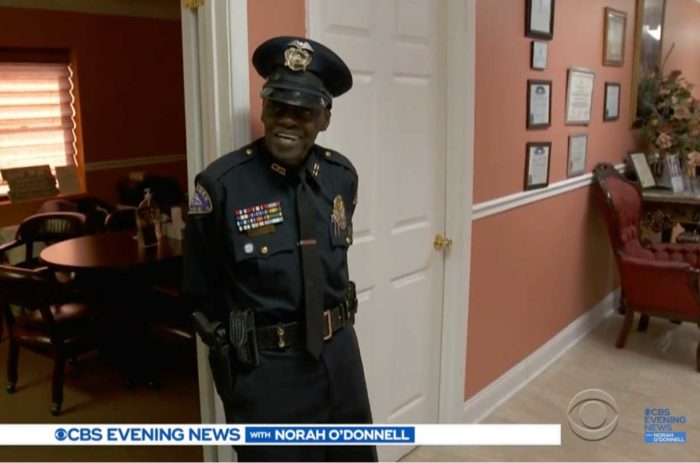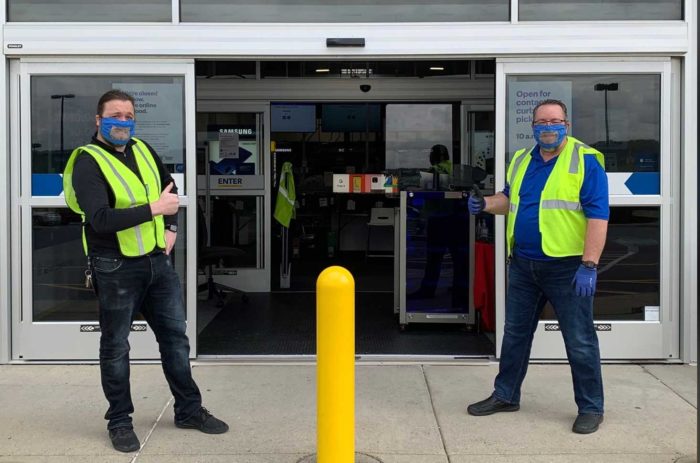Internet community helps crack grandma’s code
When a brain tumor took away Dorothy Holm’s ability to speak, she picked up index cards and began filling them, edge to edge, with seemingly random, indecipherable sequences of letters. Her grandchildren saw her scribbling and thought she was leaving them a code — but it was one the preteens couldn’t crack.
 Eighteen years later, the puzzle has been solved after one of Holm’s granddaughters posted images of a card online. In just 13 minutes, a MetaFilter user figured out that as Dorothy Holm was dying, she was writing out prayers.
Eighteen years later, the puzzle has been solved after one of Holm’s granddaughters posted images of a card online. In just 13 minutes, a MetaFilter user figured out that as Dorothy Holm was dying, she was writing out prayers.
“It was kind of relieving to have an answer, even if we don’t know what every single word says,” Janna Holm, who posted the card, said. “It’s nice to know that they were prayers, and kind of gave some insight into what she was thinking and what she was focused on in her last couple weeks.”
Holm said Wednesday that her grandmother, who lived in Shakopee, Minnesota, was diagnosed with lung cancer that metastasized and formed a brain tumor. She died in 1996 when Janna was 11. In her final weeks, she wrote line after line of capital letters on roughly 20 index cards, sparking her grandkids’ curiosity.
Holm said she, her brother and two cousins — then ranging in age from 8 to 12 — spent a few months trying to figure out what the letters stood for, but failed.
Holm’s father recently found one of the cards, and Holm, who loves puzzles, decided to delve into the project once again. She asked for help Monday on MetaFilter, a community blog, thinking her grandmother may have been trying to remember lyrics, and that each letter stood for a word in a song.
“This is a crazy long shot, but I’ve seen Mefites pull off some pretty impressive code-breaking before!” she posted.
In the image she posted, the letters fill the front of the card top to bottom. There is some repetition, strokes that look like backward commas and lines that look like stanza breaks. The back of the card contains fewer lines, marked with the numerals 1 and 2.
 In minutes, MetaFilter members were on the case. One user — looking at the back of the card — thought about religion and realized that each letter stood for a word in the Lord’s Prayer.
In minutes, MetaFilter members were on the case. One user — looking at the back of the card — thought about religion and realized that each letter stood for a word in the Lord’s Prayer.
“AGH, YES! ….. OFWAIHHBTN … Our Father who art in Heaven, hallowed be thy name,” the user wrote.
With that, more MetaFilter members worked on the front of the card. Holm guessed it might be a personal prayer.
And after a couple whirlwind days, Janna Holm says she has all the answers she needs.
“I don’t care if a little bit of it never gets solved,” she said. “It’s OK to have a little bit of mystery.”
China starts televising the sunrise on giant TV screens because Beijing is so clouded in smog
The smog has become so thick in Beijing that the city’s natural light-starved masses have begun flocking to huge digital commercial television screens across the city to observe virtual sunrises.
The futuristic screens installed in the Chinese capital usually advertize tourist destinations, but as the season’s first wave of extremely dangerous smog hit – residents donned air masks and left their homes to watch the only place where the sun would hail over the horizon that morning.
 Commuters across Beijing found themselves cloaked in a thick, gray haze on Thursday, January 16th, as air pollution monitors issued a severe air warning and ordered the elderly and school children to stay indoors until the quality improved.
Commuters across Beijing found themselves cloaked in a thick, gray haze on Thursday, January 16th, as air pollution monitors issued a severe air warning and ordered the elderly and school children to stay indoors until the quality improved.
The air took on an acrid odor, and many of the city’s commuters wore industrial strength face masks as they hurried to work.
‘I couldn’t see the tall buildings across the street this morning,’ said a traffic coordinator at a busy Beijing intersection who gave only his surname, Zhang. ‘The smog has gotten worse in the last two to three years. I often cough, and my nose is always irritated. But what can you do? I drink more water to help my body discharge the toxins.’
San Francisco approves tech shuttle bus pilot program
The city of San Francisco on Tuesday (January 21) unanimously approved a pilot program that would require operators of the buses used to shuttle around employees of big tech firms to pay a fee for using certain transit stops around the city.
 Those shuttles — which have colloquially come to be known as “Google buses,” though many of the large tech companies use them — have been a hot-button topic in the Bay Area, becoming a symbol for the growing divide between the tech industry and some of the non-tech community that blames the sector’s wealthy employees for the rising rents and changing culture of the city.
Those shuttles — which have colloquially come to be known as “Google buses,” though many of the large tech companies use them — have been a hot-button topic in the Bay Area, becoming a symbol for the growing divide between the tech industry and some of the non-tech community that blames the sector’s wealthy employees for the rising rents and changing culture of the city.
Still, city officials warned that people should not conflate those bigger issues with the action being taken on Tuesday. “These buses have become the physical manifestation of a lot of larger issues. We’re not purporting to solve all of those issues,” said Edward Reiskin, the city’s director of transportation.
The 6-0 vote of the San Francisco Municipal Transportation Agency (SFMTA) board of directors, puts in place an 18-month program that allows the shuttle buses to legally pick up and drop off passengers at 200 stops previously only designated for Muni, the city’s official public transit system. The bus operator companies will have to pay a $1 fee per day for each stop, which would create about $1.5 million — a sum that would only go as far as paying back the city’s costs of operating the program. The SFMTA has cited a state proposition that would require a ballot vote by residents to charge anything more than that. The goal is for the pilot to launch in July and wrap up in December 2015.
Shuttles will be required to display a placard. They will also have to provide data to the city via onboard GPS about things like the number of stops they make, so the city can better audit the shuttles.
The shuttles make about 35,000 boardings a day, as opposed to the 700,000 that Muni makes, said Carli Paine, a project manager at the SFMTA.
From USA Today, London’s Daily Mail and The Kansas City Star



